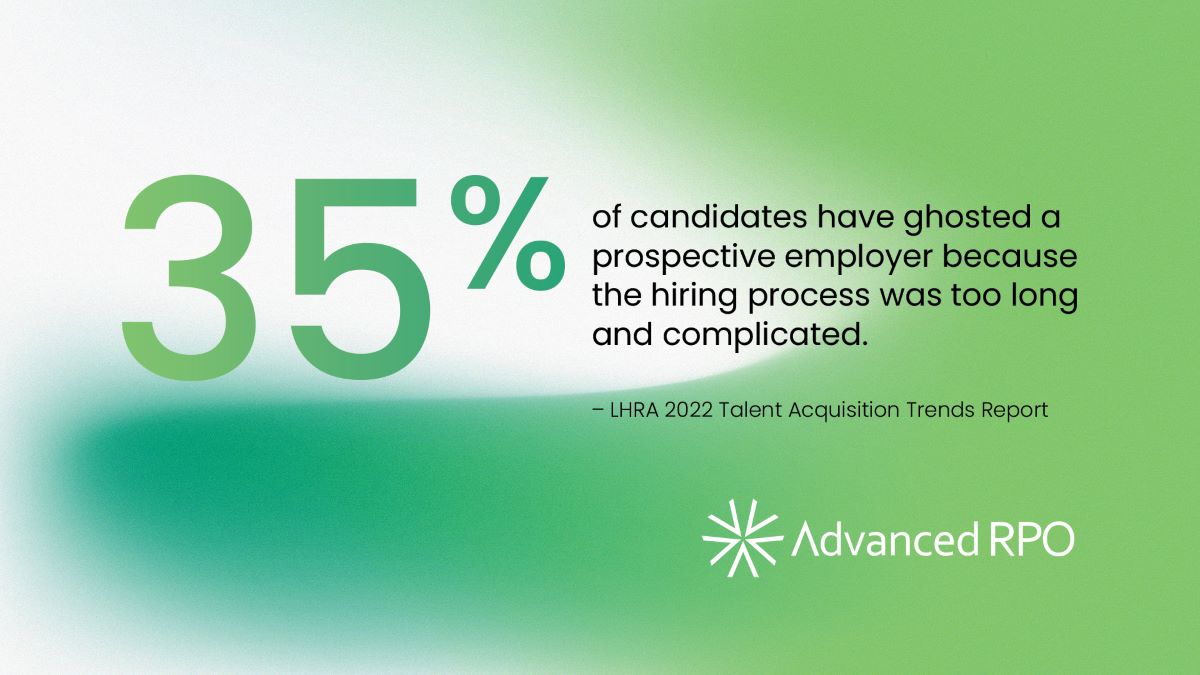Statistics + Stories Of Hiring Innovation And Impact

The world of hiring has been transformed – but the dust has far from settled. More surprising than the way our market has changed is how quickly it continues to evolve.
The research in our new report by Lighthouse sheds some light on what both Talent Acquisition leaders AND today’s candidates are facing in our current labor market. Below, we bring this data to life through the experiences of our clients.
Statistic: Compensation has been a sticking point for 75% of employers in their ability to attract and hire talent.
Candidates are asking employers to “show me the money.” According to the Lighthouse research, the most important factor for candidates during the hiring process is knowing the hourly rate or salary upfront.
Just how competitive is the market? One company shared that while a candidate was in the lobby waiting for her interview to begin, she received a phone call from another recruiter and an offer for $28,000 over her asking salary. The unfortunate reality is that many organizations, especially mid-sized ones, just can’t afford to raise compensation. In these cases, two things are critical.
First, prospective employers can stand out by offering a more efficient, friendly and convenient process over those requiring candidates to jump through a number of hoops. Remember, time is of the essence. Second, we recommend that companies have a very clear understanding of their employee value proposition, both overall and within specific departments. This will help reduce the uncertainty many candidates feel about whether a new position is the “right choice” for them personally, and increase their confidence that the culture will be a good fit for them.
Statistic: 35% of candidates have ghosted a prospective employer because the hiring process was too long and complicated.
In this market, it’s not uncommon for candidates to receive multiple offers. It’s important for companies to evaluate each stage of their hiring process to optimize efficiency. Oftentimes it’s one or two processes that are slowing overall hiring down, and our clients aren’t aware until we come in backed by our data-driven insights.
One client was starting to see their acceptance rates drop. They brought in our team to do some analysis on their hiring process to identify any weak spots. One metric we uncovered was that the submit-to-interview ratio was 1.2 to 1. It was an extra step that wasn’t bringing much value. They ultimately decided to eliminate the submittal stage.
Companies using an RPO partner said that the most important deliverable isn’t candidates. It is the value that comes in the form of innovative ideas and the broad market perspective RPO leaders can offer.
Employers are operating without a hiring playbook in a market most have never experienced before. Talent acquisition teams are trying new tactics to attract and hire candidates, but are limited by their own experiences in their specific markets and industries.
RPOs are developing today’s hiring best practices at a faster rate than any in-house recruiting team. They’re able to test new strategies every day, and analyze trends in real time across their entire client base. A huge benefit to partnering with an RPO is gaining access to this knowledge far before their hiring competition. Here are three real-life examples of how Advanced RPO makes a difference for its clients.
- One client was expanding its workforce at a facility that was particularly challenging to staff. To address this, we extrapolated their job title and advertised it not only with the naming convention they use internally, but also with titles that directly aligned with their target candidates. Doing this provided a 1,100% increase in applications.
- A longtime client was struggling with the hiring process due to their ATS being severely limited. Knowing they couldn’t make an ATS change due to global implications, we brought in our own technology to bridge the gap and fill roles for them much more effectively by meeting their candidates’ expectations for the hiring experience.
- Our approach to recruitment gives our clients an edge. We start by analyzing in-market labor data to assess how competitive our client is based on pay, benefits, and value proposition. We then create a passive and active candidate sourcing and recruiting plan by position and location utilizing a variety of tactics beyond programmatic job boards. There’s no easy button for recruiting. It’s important to take the time to assess the data from these efforts to continuously improve your strategies and pivot when necessary.
With the pace of change in the hiring market today, employers must be agile in order to be competitive. It’s important to understand research from both a bird’s eye view as well as how it impacts real-world hiring. Please reach out to our team if you have any questions about the report, or how we’ve helped clients overcome today’s hiring challenges.
